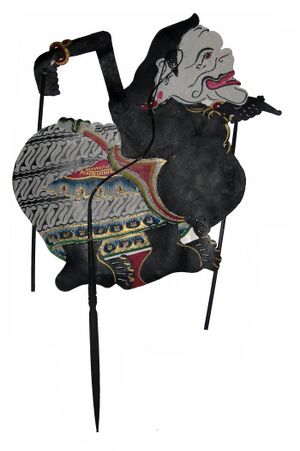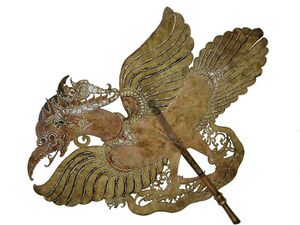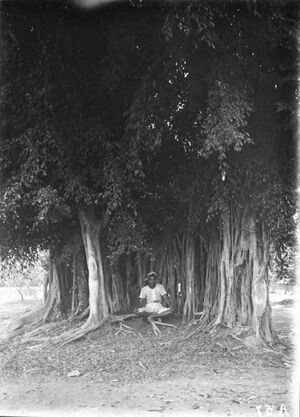كيجاون
| Polytheistic Javanism | |
|---|---|
| ꦏꦗꦮꦺꦤ꧀ Kajawèn | |
| النوع | Folk religion |
| الحوكمة | National Javanism Religious Council of the Republic Indonesia |
| المنطقة | Central and eastern hemisphere of Java[1][2] |
| اللغة |
|
| المقر الرئيسي | Central Java |
| الاعتراف بها | Officially recognized by Indonesian government |
| انفصلت عن | Kapitayan (monotheistic Javanism) |
| الأعضاء | Javanese |
| الشعار | 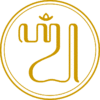 |
| جزء من سلسلة عن |
| الدين في جاوة |
|---|
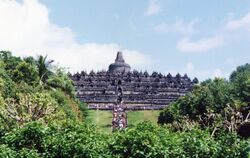 |
| جزء من سلسلة مقالات عن |
| أنثروپولوجيا الأديان |
|---|
 |
| الأنثروپولوجيا الاجتماعية والثقافية |
كيجاون (جاوية: ꦏꦗꦮꦺꦤ꧀, romanized: Kajawèn) أو الجاوية، وتدعى أيضًا الكباطنية، وأغاما جاوا، و[[كپرسايان، هي تراث ديني جاوي، يتألف من عناصر بوذية وهندوسية وأرواحية. يرجع أصل كيجاون إلى التاريخ والتدين الجاويين، إذ يؤلّف بين أديان مختلفة.
...
تعريفات
يستعمل مصطلح الكباطنية مثل مصطلح كيجاون، وأغاما جاوا وكيبرسايان، ولكنه ليس نفسه تمامًا:
الكباطنية: «علم الباطن» أو «وعي الباطن»، وهي كلمة مشتقة من الكلمة العربية «باطن»، وتعني الداخل أو المخفي. كيجاون: «الجاوية»، وهي الثقافة والمعتقدات الدينية والشعائر التي يعتنقها الشعب الجاوي في وسط جاوا وشرقها. وهو مصطلح «لا يدل على فرقة دينية، بل على نمط حياة وأخلاق مستوحاة من الفكر الجاوي». أغاما جاوا: «الدين الجاوي». كيبرسايان: «الإيمان» ، «الدين»، واسمه الكامل: كيبارسايان كيبادا توهان يانغ ماها إسا، ويعني «المؤمن بالإله الواجد القدير». يغطي مصطلح كيبارسايان رسميًّا عدة أشكال من الديانات الأسرارية في إندونيسيا. وحسب كالدارولا، فإن المصطلح «ليسَ تصنيفًا مناسبًا لما يجمع المجموعات الأسرارية». ويشمل هذا المصطلح الكباطنية وكيجاون وكيروهانيان. الكباطنية هي رعاية النفس من أجل تحقيق السلام الداخلي، وهي موروثة من التراثات قبل الإسلامية، أما كيجاون فهي متجهة إلى خارج النفس، إلى المجتمع، وتظهر في الشعائر والطقوس.
التاريخ
Java has been a melting pot of religions and cultures, which has created a broad range of religious belief, including animism, spirit cults, and cosmology.
الهندوسية والبوذية
وصلت التأثيرات الهندية إلى جاوا أول ما وصلت في الدين الهندوسي، الذي بلغ الأرخبيل الإندونيسي منذ القرن الأول الميلادي. ومع حلول القرن الرابع، كانت مملكة كوتاي في شرق كاليمانتان، ومملكة تاراماناغارا في غرب جاوا، ومملكة هولنغ (كالينغا) في وسط جاوا، من الممالك الهندوسية الأولى التي أقيمت في المنطقة. من الممالك الهندوسية القديمة المعروفة: مملكة ماتارام المشهورة ببنائها معبد برامبانان العظيم، ومملكتا كديري وسينغهاساري. ومنذئذٍ انتشرت الهندوسية إلى جانب البوذية في الأرخبيل وبلغت قمة تأثيرها في القرن الرابع عشر. أما آخر الممالك الهندوسية البوذية وأكبرها، فهي مملكة ماجاباهيت، التي غطى نفوذها كل الأرخبيل الإندونيسي.
صبغت الهندوسية والبوذية بعمقٍ كل جوانب المجتمع، واختلطت بالتراث والثقافة الأهلية في المنطقة. من هذه الجوانب: العُبّاد، ويسمَّون ريسي (في السنسكريتية: ريشي)، وهم يعلِّمون مجموعة من الشعائر الأسرارية. يعيش الريسي محاطًا بتلاميذه، وهم يقومون على حاجات معلمهم اليومية. كانت سلطات الريسي لا تتعدى الطقسيّ الاحتفالي. في المحاكم، يعطي رجال الدين البراهميون والمعلَّمون المقدسون (البودجانغا) الشرعية للحكام، ويربطون النظام الكوني الهندوسي بحاجاتهم السياسية. أما اليوم، فتتناثر جيوب هندوسية صغيرة في أنحاء جاوا، ولكن على الشاطئ الشرقي قرب بالي تجمع سكان هندوسي كبير، لا سيما حول بلدة بانيوانغي.
الإسلام
 مقالة مفصلة: الإسلام في إندونيسيا
مقالة مفصلة: الإسلام في إندونيسيا
اعتنقت جاوا الإسلام في نحو عام 1500 للميلاد. كانت نخَب المجتمع وطبقاته الراقية أول الناس قبولًا للإسلام، وهو ما أسهم في نشره أكثر وقبوله في جاوا. تكاملت الصوفية والأشكال الأخرى من الإسلام الشعبي بسهولة مع الدين الشعبي الموجود من قبل في جاوا. ودخلت أشكال الصوفية الجديدة والإسلام الشرعي في المحاكم، واختلطت مع الشعائر والأساطير الموجودة في الثقافة الهندوسية البوذية. وصف كليفورد غريتز هذا بالأبنغان والبريايي، أي «أشكال الوفيقية الجاوية الخاصة بالطبقة الدنيا وبالنخبة الاجتماعية».
أصبح الكياي -وهم علماء الكتابة المسلمون- النخبة الدينية الجديدة في المجتمع مع تراجع النفوذ الهندوسي. ليس في الإسلام هرمية للقادة الدينيين ولا كهنوت رسمي، ولكن حكومة الاستعمار الألماني أسست ترتيبًا مدروسًا للمسجد ولمدارس الوعظ الإسلامية الأخرى. خلّد الكياي في المدارس الإسلامية الجاوية تراث الريسيين. ويخدم التلاميذ حاجات معلمهم، وحتى الفلاحون حول المدرسة.
المسيحية
 مقالة مفصلة: المسيحية في إندونيسيا
مقالة مفصلة: المسيحية في إندونيسيا
وصلت المسيحية إلى جاوا مع التجار البرتغاليين والبعثات التبشيرية، من الكنيسة الألمانية المصلحة، وفي القرن العشرين مرة أخرى من الكنيسة الرومانية الكاثوليكية، وكان منهم اليسوعيون ومبشّروا الكلمة الإلهية. في جاوا اليوم بعض المجتمعات المسيحية، معظمها مصلحة في المدن الكبيرة، وفي المناطق الريفية في جنوب وسط جاوا قرى كاثوليكية رومانية خالصة. اضطُهد الرومان الكاثوليكيون والمجموعات المسيحية الأخرى بسبب معتقداتهم، وكان من هذا الاضطهاد حظر احتفالات الكريسماس وتزييناته.
الإسلام والكباطنية
Although Java is predominately Muslim, kejawen the syncretic Javanese culture, still plays a cultural undercurrent among some Javanese.[3]
Some Javanese texts relate stories about Syekh Siti Jenar (also known as Syekh Lemah Abang) who had conflicts with Wali Sanga, the nine Islamic scholars in Java, and the Sultanate of Demak.[4][5]
With the Islamisation of Java there emerged a loosely structured society of religious leadership, revolving around kyais, Islamic experts possessing various degrees of proficiency in pre-Islamic and Islamic lore, belief and practice.[6] The Kyais are the principal intermediaries between the villages masses and the realm of the supernatural. However, this very looseness of Kyai leadership structure has promoted schism. There were often sharp divisions between orthodox kyais, who merely instructed in Islamic law, with those who taught mysticism and those who sought reformed Islam with modern scientific concepts.
As a result, the Javanese recognize two broad streams of religious commitment:[7][note 1]
- Santri or putihan ("pure ones"), what majority of Javanese people tend to follow are those who pray, performing the five obligatory daily ritual prayers.[7] They are more orthodox in their Islamic belief and practice,[6] and oppose the abangan, who they consider to be heterodox.[10]
- Abangan, "the red ones", who do not strictly observe the Islamic rituals.[7] They have mixed pre-Islamic animistic and Hindu-Buddhist concepts with a superficial acceptance of Islamic belief,[6] and emphasize the importance of the purity of the inner person, the batin.[7]
This distinction between "the High Islam or scripturalist, shari`a-oriented Islam of the `ulama"[11] and "living local Islam"[11] or "Folk Islam"[11] or "popular Islam"[11] is not restricted to Java, but can be found in other Islamic countries as well.[11]
Ernest Gellner has developed an influential model of Muslim society, in which this dichotomy is central:[11]
He sees a dialectical relationship between the two, with periods of scripturalist dominance followed by relapses into emotional, mystical, magical folk Islam. Modernity — especially urbanisation and mass literacy — unsettles the balance between the two, by eroding the social bases of folk Islam. An irreversible shift to scripturalist Islam occurs, which is in Gellner’s view the equivalent of secularisation in the West.[11]
Bruinessen finds this too limited, and distinguishes three overlapping spheres:[11]
- Shari`a-oriented Islam,
- Sufism (mystical Islam, which has its learned and popular variants),
- The periphery of local rituals, local shrines, local spirit cults and heterodox beliefs and practices in general.[note 2]
Javanese syncretistic religiousness has a strong popular base, outnumbering the santri and the support for Islamic political parties.[12][بحاجة لمصدر] Choy relates this to a Javanese apparent openness to new religions, but filtering out only those elements which fit into the Javanese culture.[13] Choy mentions several reasons for this nominal Islamic identity:[14]
- The Islamic scholars in Java have been trained in curricula which were geared for social conditions of two or three centuries ago, lacking the ability to impart the spirit and sense of Islam;[13]
- The inability to summarise the principles of Islam in understandable basic points which can be applied to daily life;[14]
- Kebatinan can be learned and understood without the need to learn Arabic.[15]
In the early 20th century, several groups became formalised, developing systematised teachings and rituals, thus offering a 'high' form of abangan religiosity, as an alternative to the 'high' Islam.[16] Bruinessen opines that the kebatinan-movements is a deliberate rejection of scriptural Islam,[17] which arose out of "folk Islam".[11]
السمات
الهدف
Kebatinan is derived from the Arabic word batin, meaning "inner" or "hidden",[18] or "inner self".[19] It is a metaphysical search for harmony within one's inner self, connection with the universe, and with an Almighty God.[19] Kebatinan believe in a "super-consciousness" which can be contacted through meditation.[15]
المعتقدات
Kebatinan is a combination of metaphysics, mysticism and other esoteric doctrines[19] from Animistic, Hinduistic, Buddhist and Islamic origins.[بحاجة لمصدر] Although the Javanese culture is tolerant, and open to new religions, only those qualities are accepted and filtered which fit into the Javanese culture, character and personality.[13] Javanese ideals combine human wisdom (wicaksana), psyche (waskita) and perfection (sempurna). The follower must control their passions, eschewing earthly riches and comforts, so that they may one day reach enlightened harmony and union with the spirit of the universe.
According to Choy, the Kebatinan have no certain prophet,[20] sacred book,[20] nor distinct religious festivals and rituals. Nevertheless, various kebatinan-movements have their own foundational writings and founders.[21][16]
A kebatinan practitioner can identify with one of the six officially recognized religions, while still subscribe to the kebatinan belief and way of life.
الممارسات
| هذا المقال هو جزء من سلسلة عن |
| أساطير و فولكلور إندونسيا |
|---|
 |
A variety of practices is being used in kebatinan to acquire ilmu[22][note 3], namely tiraka[23][22][24][note 4] and tapa[23] or tapabrata.[24][note 5]
Many Kebatinan followers practice in their own way to seek spiritual and emotional relief. These practices are not performed in churches or mosques, but at home or in caves or on mountain perches. Meditation in Javanese culture is a search for inner self wisdom and to gain physical strength. This tradition is passed down from generation to generation.[بحاجة لمصدر]
التأمل
There are several tapa:
- tapa Ngalong (meditation by hanging from a tree)
- tapa Kungkum (meditation under a small waterfall or meeting point of 2-3 rivers / Tempuran / Tjampuhan)
الصيام
Fasting is a common practice employed by Javanese spiritualists in order to attain discipline of mind and body to get rid of material and emotional desires:
- pasa Mutih (abstention from eating anything that is salted and sweetened, only eating/drinking pure water & rice)
- pasa Senen-Kemis (fasting on Monday-Thursday)
- pasa Ngebleng (fasting for a longer period, usually 3-5-7 days)
الأضحيات
Kebatinan often implies animistic worship, because it encourages sacrifices and devotions to local and ancestral spirits. These spirits are believed to inhabit natural objects, human beings, artifacts, and grave sites of important wali (Muslim saints). Illness and other misfortunes are traced to such spirits, and if sacrifices or pilgrimages fail to placate angry deities, the advice of a dukun or healer is sought.
ممارسات أخرى
Other practices include:
- tapa Pati-Geni (avoiding fire or light for a day or days and isolating oneself in dark rooms),
- tapa Ngadam (stand/walk on foot from sunset till sunset, 24 hours in Silence)
Historical texts
Kebatinan and kejawen practices are extensively written about in texts that are held in the Sonobudoyo library in Yogyakarta, and the main Kraton Libraries of Surakarta and Yogyakarta.[بحاجة لمصدر] Many of the texts are deliberately elliptical so that those who do not work with either initiates or teachers are unable to ascertain or understand the esoteric doctrines and practices.[بحاجة لمصدر] In quite a few cases codified texts with secret systems to "unlock" the meanings are employed.[بحاجة لمصدر]
But according to Bruinessen, the writing down of kebatinan teachings was a novelty which appeared with the institutionalisation of the kebatinan-movements in the beginning of the 20th century.[17]
Kebatinan organisations
The appearance of formal kebatinan movements reflects the modernisation of Indonesia.[25] Kebatinan movements appeared early in the 1900s in urban traditional elite circles,[11] together with the rise of nationalism and the Muhammadiyah, a modernist Islamic movement.[25] Hardopusoro, one of the earliest kebatinan-movements, had strong links with the Theosophical Society.[25] Some remained very elitist, while others also accepted lower urban and rural followings, thereby popularising abangan, or syncretistic Islam, as an alternative to shari`a-oriented Islam.[11]
After Indonesia gained independence in 1945, the kebatinan received political support and attracted large followings.[16] Kebatinan-movements were seen by secular nationalistic elites as allies against the rise of political Islam.[17] The political struggle between the Muslim parties and the Communists and Nationalists lead to a sharper demarcation between syncretistic and shari`a-oriented Islam, whereby most kebatinan movements affiliated with the Communist or Nationalist Parties.[11][note 6]
Umbrella organisations representing several hundred kebatinan organisations, lobbied to attain legitimacy and recognition as an official religion.[25][35] They are registered at the HKP (Himpunan Penghayat Kepercayaan), which is controlled by the PAKEM (Pengawas Aliran Kepercayaan Masyarakat).[بحاجة لمصدر] After the Suharto-era (1967-1998), the kebatinan-movements lost political support,[16] and have become less dynamic, their adherents avoiding public engagement.[25]
Altogether several hundred kebatinan-groups are or have been registered, the best-known of which are:[note 7]
Subud
Subud was founded in the 1920s by Muhammad Subuh Sumohadiwidjojo. The name Subud was first used in the late 1940s when Subud was legally registered in Indonesia. The basis of Subud is a spiritual exercise commonly referred to as the latihan kejiwaan, which was said by Muhammad Subuh to be guidance from "the Power of God" or "the Great Life Force". The aim of Subud is to attain perfection of character according to the will of God.[39] Only when passion, heart and mind are separated from the inner feeling is it possible to make contact with the "Great Life Force" which permeates everywhere.[40]
Muhammad Subuh saw the present age as one that demands personal evidence and proof of religious or spiritual realities, as people no longer just believe in words. He claimed that Subud is not a new teaching or religion but only that the latihan kejiwaan itself is the kind of proof that humanity is looking for. He also rejected the classification of Subud as a kebatinan organization. There are now Subud groups in about 83 countries, with a worldwide membership of about 10,000.[41]
The name Subud is said to be formed from the Sanskrit words susila ("the good character of man"[39]), bodhi ("the force of the inner self"[39]) and dharma ("trust in God"[39]).[web 1]
Sumarah
Sumarah was formed in the 1930s by Pak Hardo, Pak Soekino and Pak Sutadi, without a formal organisation.[42] In those early days, the younger members were taught kanoman, occult practices including invulnerability for knives and guns. This was regarded as essential in the struggle against the Dutch colonial powers.[42] Around 1950, when Indonesia became an independent nation, Sumarah was streamlined and organised by Dr. Surono. The emphasis shifted from magic to "surrender to God".[42] From 1957 on internal struggles surfaced between dr. Surono and the founders Pak Hardo and Pak Sadina, leading to a change in leadership by dr. Ary Muthy in 1967.[42]
Sumarah theology maintains that humankind's soul is like the holy spirit, a spark from the Divine Essence, which means that we are in essence similar to God. In other words, "One can find God within oneself," a belief similar to the "I=God" theory found in Hindu-Javanese literature.[43]
According to Sumarah theology, man and his physical and spiritual world are divided into three parts:[43]
- The physical body and brain. One section, Sukusma, governs the passions. In the brain, the faculty of thinking has two functions:
- To record memories
- To serve as a means of communion with God
- The invisible world, which is situated within the chest. It is the Jiwa, the ineffable soul, which provides the driving forces governing thought and reason. It is here that the deeper feeling (Rasa) is located.
- The more elusive and sublime world. The most elusive and sublime world is hidden somewhere near the anatomical heart.
Sumarah's conception of God is different from Islam. It has a pantheistic vision of reality, considering God to be present in all living beings.[43]
Pangestu
Pangestu was founded in 1949.[44] Its doctrine was revealed in 1932 to Sunarto Mertowarjoyo, and written down in the Setat Sasangka Djati by R.T. Harjoparakowo and R. Trihardono Sumodiharjo Pangastu.[44] It describes the way to obtain wahyu, the blessing of God.[44]
Sapta Dharma
Sapta Dharma was founded in 1952 by Harjo Sapura, after he received a revelation.[38] According to Sri Pawenang, it was God's wish to provide the Indonesian people with a new spirituality in a time of crisis.[38] Its aim is to free man of his passions.[44]
According to Sapta Dharma teachings, suji (meditation) is necessary to pierce through different layers of obstacles to reach Semar, the guardian spirit of Java.[45] Theory and practice resemble Hindu Kundalini yoga, aiming at awakening the Kundalini energy and guiding it through the chakras.[44]
Majapahit Pancasila
Majapahit Pancasila[note 8] was founded by W. Hardjanta Pardjapangarsa.[40] It is based in Javanese Hindu-yogic practices,[47] c.q. Kundalini yoga,[40] rather than Balinese ritual practice as is prevalent in Parisada Hindu Dharma.[47] According to Hardjanta, his meditation practices also lead to invulnerability for knives, daggers and other weapons.[48]
Spread of kebatinan
Malaysia
Kebatinan beliefs have spread to some parts of Malaysia, wherein certain individuals have combined it with Islamic concepts (e.g. proclaiming themselves to be new-age Islamic prophets, but delivering messages that are a combination of Islamic and kebatinan beliefs). This has led to the Malaysian Islamic authorities declaring elements of kebatinan to be "syirik" (shirk) and un-Islamic. Kebatinan interpretations of Islam are widespread in Malaysia among practitioners of silat, traditional healers, and some preachers (such as Ariffin Mohammed and other self-proclaimed Islamic prophets).
Netherlands
In the Netherlands, the former colonial power in Indonesia, some kebatinan-groups are active.[49]
Singapore
Since the majority of Singaporean Malays are of Indonesian descent, particularly from Java, many of Kebatinan are still practiced usually among older people. However, the practice is still widespread among some Javanese Silat and Kuda Kepang groups, and also traditional shamans.
Suriname
It was brought to Suriname by Javanese workers in the late 19th century.
See also
Belief systems
Gods and rituals
Notes
- ^ Anthropologist Clifford Geertz made a well-known, though criticised, threefold distinction between abangan, antri and priyayi.[بحاجة لمصدر][8] The priyayi are the descendants of the high class and court members, were gurus taught the Hindu-Buddhist art of inner cultivation,[9] which stayed alive in the interior areas of Java.[2] Geertz noticed that the priyayi play a central role in the teaching of kejawen and kebatinan to the abangan.[9]
- ^ Bruinessen: "This third sphere was no doubt in most parts of the world for many years the one that had by far the greatest numbers of adherents. It has often been through Sufism that people from the heterodox periphery gradually moved towards some degree of conformity with orthodoxy."[11]
- ^ knowledge, power
- ^ "Fasting",[23] "ascetic exercises",[22] "spiritual techniques"[24]
- ^ "austerity",[23] "spiritual techniques"[24]
- ^ The relation between religion c.q. "spirituality", politics and (post-)colonial struggles is not unique to Indonesia. In India, Hindu reform movements involved both religious and social reforms, for example the Brahmo Samaj,[26] Vivekananda, who modernised Advaita Vedanta,[27] Aurobindo[26] and Mahatma Gandhi.[26] In Buddhist countries, Buddhist modernism was a response against the colonial powers and the western culture.[28] In Sri Lanka, Theravada Buddhism was revitalised in the struggle against the colonial rule. The Theosophical Society played an essential role here.[29][30][31] In China, Taixu propagated a Humanistic Buddhism, which is again endorsed by Jing Hui, the (former) abbott of Bailin Monastery.[32] In Japan, Buddhism adopted nationalistic politics to survive in the modern era, in which it lost support from the government.[33][28] Zen was popularised in the west by adherents of this modern Buddhism, especially D.T. Suzuki and Hakuun Yasutani.[34][28]
- ^ See [36] for a longer list of Kebatinan organisations.
- ^ Full "Sanaata Dharma Majapahit Pancasila",[46] acronym "Sadhar Mapan"[46]
References
- ^ Oey 2000, p. 58-59.
- ^ أ ب Mulder 2005, p. 16.
- ^ Mulder 2005.
- ^ Headley 2004, p. 367-368.
- ^ Azra 2006, p. 129.
- ^ أ ب ت van der Kroef 1961.
- ^ أ ب ت ث Mulder 2005, p. 15.
- ^ Mulder 2005, p. 21-22.
- ^ أ ب Mulder 2005, p. 21.
- ^ Mulder 2005, p. 15-16.
- ^ أ ب ت ث ج ح خ د ذ ر ز س ش van Bruinessen 2000a.
- ^ Mulder 2005, p. 22-24.
- ^ أ ب ت Choy 1999, p. 109.
- ^ أ ب Choy 1999, p. 109-110.
- ^ أ ب Choy 1999, p. 110.
- ^ أ ب ت ث Masud, Salvatore & van Bruinessen 2009, p. 148.
- ^ أ ب ت van Bruinessen 2000b.
- ^ Levenda 2011, p. 72.
- ^ أ ب ت Choy 1999, p. 107.
- ^ أ ب Choy 1999, p. 108.
- ^ Choy 1999.
- ^ أ ب ت Retsikas 2012, p. 179.
- ^ أ ب ت ث Christomy 2008, p. 171.
- ^ أ ب ت ث Hughes-Freeland 2008, p. 189.
- ^ أ ب ت ث ج Ooi 2004, p. 719.
- ^ أ ب ت Sinari 2000.
- ^ Rambachan 1994.
- ^ أ ب ت McMahan 2008.
- ^ McMahan 2008, p. 98.
- ^ Gombrich 1996, p. 185-188.
- ^ Fields 1992, p. 83-118.
- ^ Feuchtwang 2010, p. 189.
- ^ Victoria 2006.
- ^ Fields 1992.
- ^ Hooker 1988, p. 196.
- ^ van Bruinessen & Howell 2007, p. 225-226.
- ^ أ ب ت ث van Bruinessen & Howell 2007, p. 226.
- ^ أ ب ت ث ج ح خ Choy 1999, p. 116.
- ^ أ ب ت ث Choy 1999, p. 118.
- ^ أ ب ت Choy 1999, p. 119.
- ^ Hunt 2003, p. 122.
- ^ أ ب ت ث Choy 1999, p. 115.
- ^ أ ب ت Choy 1999, p. 114.
- ^ أ ب ت ث ج Choy 1999, p. 117.
- ^ Choy 1999, p. 116-117.
- ^ أ ب Research School of Pacific Studies 1980, p. 217.
- ^ أ ب Tarling 1992, p. 563.
- ^ Choy 1999, p. 122.
- ^ Renard 2010.
Sources
Published sources
- Azra, Azyumardi (2006), Islam in the Indonesian World: An Account of Institutional Formation, Mizan Pustaka
- Beatty, Andrew (1999), Varieties of Javanese Religion: An Anthropological Account, Cambridge University Press, ISBN 0-521-62473-8
- van Bruinessen, Martin (2000a), Muslims, Minorities and Modernity: The restructuring of heterodoxy in the Middle East and Southeast Asia. Inaugural Lecture, http://www.hum.uu.nl/medewerkers/m.vanbruinessen/publications/Oratie%20korte%20versie.htm
- van Bruinessen, Martin (2000b), "Transformations of Heterodoxy", Transformations of Heterodoxy. Inaugural Lecture (condensation), 7, ISIM, Leiden, pp. 5
- van Bruinessen, Martin; Howell, Julia Day (2007), Sufism and the 'Modern' in Islam, I.B.Tauris
- Caldarola, Carlo (1982), Religion and Societies: Asia and the Middle East, Walter de Gruyter
- Choy, Lee Khoon (1999), A fragile nation: the Indonesian crisis, World Scientific
- Christomy, Tommy (2008), Signs of the Wali: Narratives at the Sacred Sites in Pamijahan, West Java, ANU E Press
- Epa, Konradus (2010). "Christians refuse to cancel Christmas". UCA News. Archived from the original on 2013-08-20.
- Feuchtwang, Stephen (2010), The Anthropology of Religion, Charisma and Ghosts: Chinese Lessons for Adequate Theory, Walter de Gruyter
- Fields, Rick (1992), How the Swans Came to the Lake. A Narrative History of Buddhism in America, Boston & London: Shambhala
- Geels, Antoon (1997), Subud and the Javanese mystical tradition, Richmond, Surrey: Curzon Press, ISBN 0-7007-0623-2
- Gombrich, Richard (1996), Theravada Buddhism. A Social History From Ancient Benares to Modern Colombo, Routledge
- Headley, Stephen Cavanna (2004), Durga's Mosque: Cosmology, Conversion And Community in Central Javanese Islam, Institute of Southeast Asian Studies
- Hooker, M.B. (1988), Islam in South East Asia, Brill
- Hughes-Freeland, Felicia (2008), Embodied communities: dance traditions and change in Java, Berghahn Books
- Hunt, Stephen J. (2003). Alternative Religions: A Sociological Introduction. Aldershot, Hampshire: Ashgate Publishing. ISBN 0-7546-3410-8.
- van der Kroef, Justus M (1961). "New Religious Sects in Java". Far Eastern Survey. 30 (2): 18–25. doi:10.2307/3024260. JSTOR 3024260.
- Levenda, Peter (2011), Tantric Temples: Eros and Magic in Java, Nicolas-Hays
- Masud, Muḥammad Kalid; Salvatore, Armando; van Bruinessen, Martin (2009), Islam and modernity: key issues and debates, Edinburgh University Press, ISBN 9780748637942
- McDaniel, June (2010). "Agama Hindu Dharma Indonesia as a New Religious Movement: Hinduism Recreated in the Image of Islam". Nova Religio: The Journal of Alternative and Emergent Religions. 14 (1): 93–111. doi:10.1525/nr.2010.14.1.93. JSTOR 10.1525/nr.2010.14.1.93.
- McMahan, David L. (2008), The Making of Buddhist Modernism, Oxford University Press, ISBN 9780195183276
- Muhaimin, Abdul Ghoffir (2006), The Islamic Traditions of Cirebon: Ibadat and Adat Among Javanese Muslims, ANU E Press
- Mulder, Niels (1978), Mysticism & everyday life in contemporary Java: cultural persistence and change, Singapore: Singapore University Press
- Mulder, Niels (2005), Mysticism in Java: Ideology in Indonesia, Kanisius
- Oey, Eric (2000), Adventure Guides: Java Indonesia, Tuttle Publishing
- Ooi, Keat Gin, ed. (2004). Southeast Asia: a historical encyclopedia, from Angkor Wat to East Timor (3 vols). Vol. 3. Santa Barbara: ABC-CLIO. ISBN 978-1576077702. OCLC 646857823.
- Rambachan, Anatanand (1994), The Limits of Scripture: Vivekananda's Reinterpretation of the Vedas, University of Hawaii Press
- Renard, Philip (2010), Non-Dualisme. De directe bevrijdingsweg, Cothen: Uitgeverij Juwelenschip
- Research School of Pacific Studies (1980), Indonesia, Australian perspectives, Volumes 1-3, Australian National University
- Retsikas, Konstantinos (2012), Becoming: An Anthropological Approach to Understandings of the Person in Java, Anthem Press
- Sinari, Ramakant (2000), Advaita and Contemporary Indian Philosophy. In: Chattopadhyana (gen.ed.), "History of Science, Philosophy and Culture in Indian Civilization. Volume II Part 2: Advaita Vedanta", Delhi: Centre for Studies in Civilizations
- Stange, Paul (1980), The Sumarah movement in Javanese mysticism. Thesis (Ph.D.) University of Wisconsin-Madison, University Microfilms International
- Tarling, N. (1992), The Cambridge History of Southeast Asia: The nineteenth and twentieth centuries. Volume two, Cambridge University Press
- Victoria, Brian Daizen (2006), Zen at war (Second ed.), Lanham e.a.: Rowman & Littlefield Publishers, Inc.
Web-sources
Further reading
- Fajfrlíková, Pavla (2018), Kejawen as the Traditional Mystical Belief on the Contemporary Java Island, Kulturní studia / Cultural Studies, http://kulturnistudia.cz/kejawen-as-the-traditional-mystical-belief-on-the-contemporary-java-island/
- Geertz, Clifford (1976), Religion of Java, University of Chicago Press
- Jones, David (2010), Magic & Mysticism in Java, http://www.newdawnmagazine.com/articles/magic-mysticism-in-java
- Kinney, Ann R.; Klokke, Marijke J.; Kieven, Lydia (2003), Worshiping Siva and Buddha: The Temple Art of East Java, University of Hawaii Press
- Retsikas, Konstantinos (2012), Becoming: An Anthropological Approach to Understandings of the Person in Java, Anthem Press
- Stange, Paul (n.d.), The evolution of Sumarah, http://paulstange.net/evolution.pdf
External links
- Articles with unsourced statements from October 2021
- Short description is different from Wikidata
- Articles containing جاوية-language text
- Pages using Lang-xx templates
- Instances of Lang-jv using second unnamed parameter
- Articles with hatnote templates targeting a nonexistent page
- Articles with unsourced statements from April 2013
- Portal-inline template with redlinked portals
- Pages with empty portal template
- Articles with unsourced statements from December 2017
- Javanese culture
- Javanese spiritual movements
- Javanese mythology
- Islam in Indonesia
- Religion in Indonesia
- Religious syncretism in Asia
